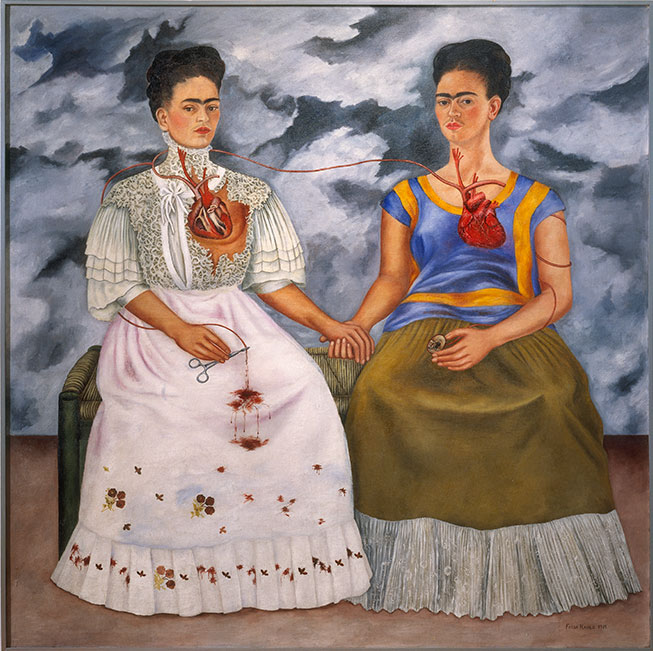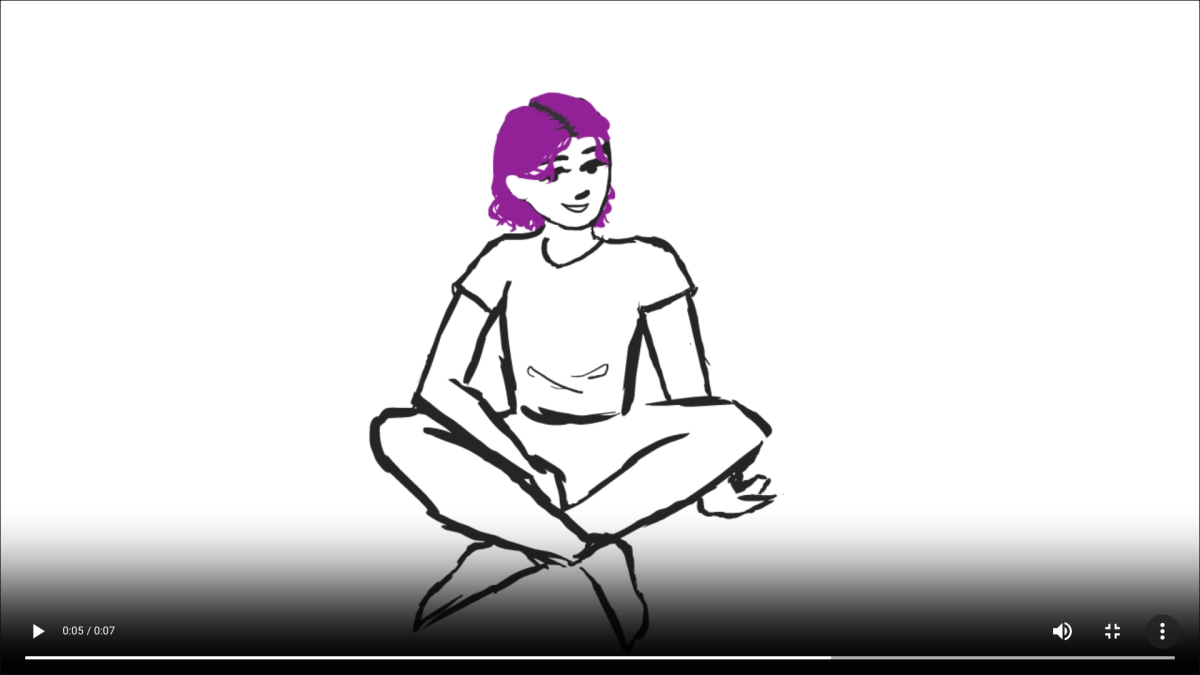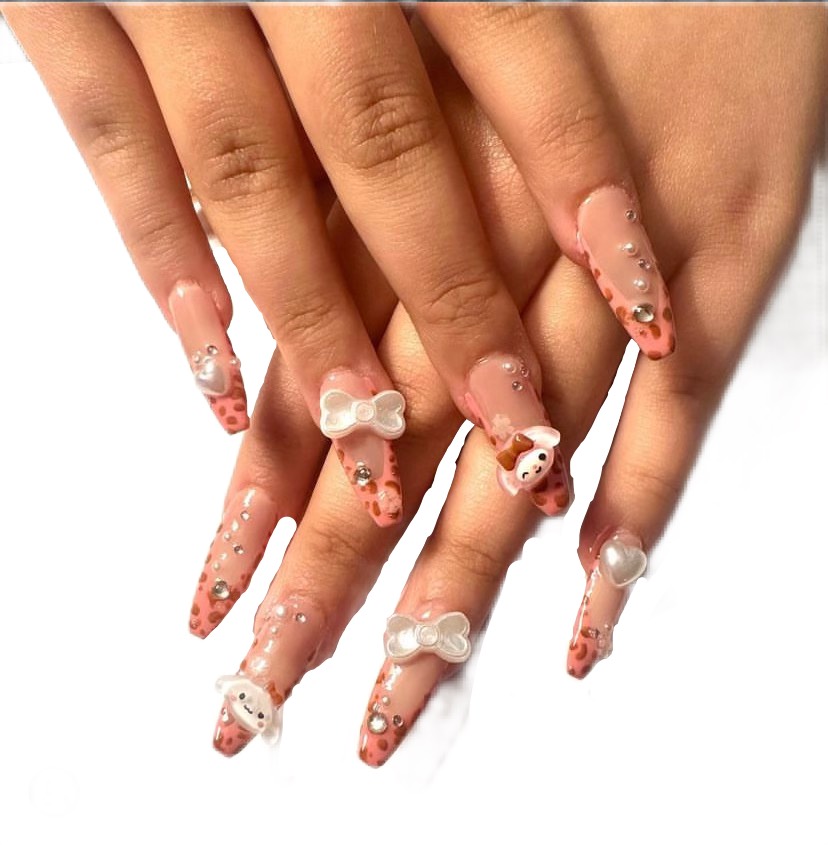“They thought I was a surrealist, but I wasn’t. I never painted dreams. I painted my own reality.”
Magdalena Carmen Frida Kahlo y Calderón, was best known for her embodiment of Mexican culture through her self portraits and her poetry. She depicted themes of identity, physical and emotional pain, and created an emphasis on her bold features. Born on July 6th, 1907 into a middle class family, her mother was a mestiza woman born in Oaxaca, Mexico, while her father was born in Germany. Within her middle class family, she had the privilege to play soccer, swam competitively and even boxed and wrestled.
Around 1913, when Kahlo was around 6 years old, she had contracted Polio, forcing her to be bedridden for several months, which caused chronic pain for all of her life. As a child, Kahlo was interested in Science and had dreams of pursuing a career as a doctor, later attending the Preparatory School in Mexico City, which was about an hour’s drive from her hometown of Coyoacan.
In 1922, she caught sight of her future lover, Diego Rivera. At the Simón Bolívar Amphitheater at San Ildefonso campus, Rivera was painting the mural known as “La Creción”, which was an allegorical composition with mythological and religious motifs. At the time, Rivera had already been an established artist, known for his Cubism and Mexican Muralism, whilst Kahlo had still been a student. Her dreams of being a doctor were changed in 1925 at the age of 18, where she was involved in a bus accident.Being extremely injured, she underwent 30 medical operations, and was confined in a full body cast.
Due to this she had dropped out of school, and while recovering, was given an easel so that she was able to paint in bed. This allowed her to paint and study arts. Kahlo’s first portrait that gained recognition was “Self-Portrait in a Velvet Dress’’, painted in 1926, which was dedicated to her first love. Formally connecting with Rivera in 1928 through the Mexican communist party, a passionate romantic relationship was born, that often mirrored the tempestuousness of the world around them. Rivera was 20 years older than Kahlo, and in a married relationship, with children of his own from 3 different women. This intuitively forecasted his infidelities throughout their relationship.
The 1937 painting, “Memory, the Heart”, portrayed the pain that Kahlo felt due to her husband’s affair with her younger sister. The broken heart represents her heavy hearted pain, and surrealist elements depicting the dreamlike nature of her memories. “The Two Fridas” painted in 1939, represents the version of Kahlo in her relationship, painted in traditional Mexican clothing, while the other is dressed in European clothing. The emphasis of the two versions of herself emphasize her splintered sense of self and shows one Frida wounded, and a connection between herself and an artery to her second self.
Caught between the past and the present. Kahlo and Rivera often went through periods of separation. It’s said that Kahlo had affairs with well known people such as, Leon Trotsky, Chavela Vargas, Isamu Noguchi and many other men and women. Her artistic career continued and her popularity continued to rise after her death in 1954. Kahlo received praise through her work, but has also been critiqued, specifically through today’s societal standards.
The question typically asked is, did Kahlo culturally appropriate Indigenous cultures? During the post-revolutionary period in Mexico, the Mexicanidad Movement had emerged, where many artists worked to insert indigenous imagery into their work which had been marginalized in Mexican culture and Mexican art. The importance of the appropriation has to do with the social context, and whether or not she was actively making this art as a profit.
There was a great sense of ethnic difference in Mexico, and adhering to the time period, the emphasis on fluidity and being Mestizo (a person of mixed Spanish and Indigenous descent). Kahlo’s aesthetic and intentional appearance reflects the vogue of her day, which constructs a clear emphasis on her homogenized indigeneity bestowed by her proximity to eurocentrism. I think that the conversation between her creation of indigeneity is nothing without Indigenous voices, and I think that it’s important to view her legacy through all lenses.
“I hope the end is joyful, and I hope never to return”.
The truth about Frida Kahlo
Misconceptions about the infamous artist Frida Kahlo
March 18, 2024
One of Frida Kahlo’s infamous painting, ‘The Two Fridas’, potraying two Fridas interlinked by their hearts.
Story continues below advertisement
About the Contributor

Valentina Henrich, Co-Music Entertainment Editor
Senior Valentina Henrich is excited to come back for her second year on The A-Blast and share her love of music as this year's music Entertainment Editor! When she’s not at school she enjoys discovering new music (particularly jazz), exploring cities with her friends and rebelling. She hopes to go to NYU and study psychology. She looks forward to a great year in The A-BLAST!









